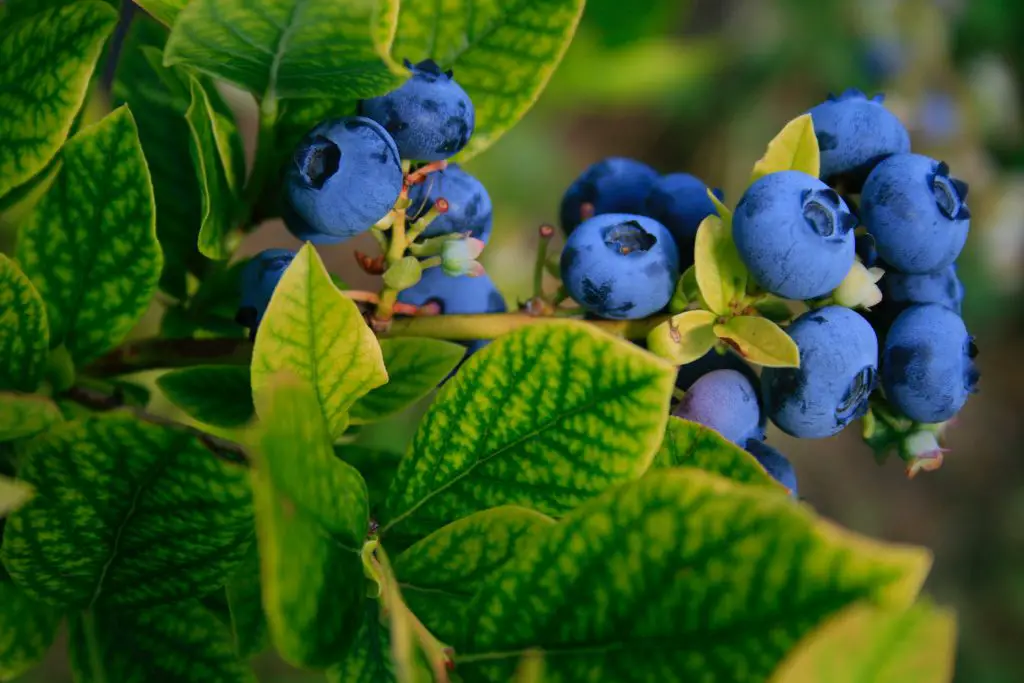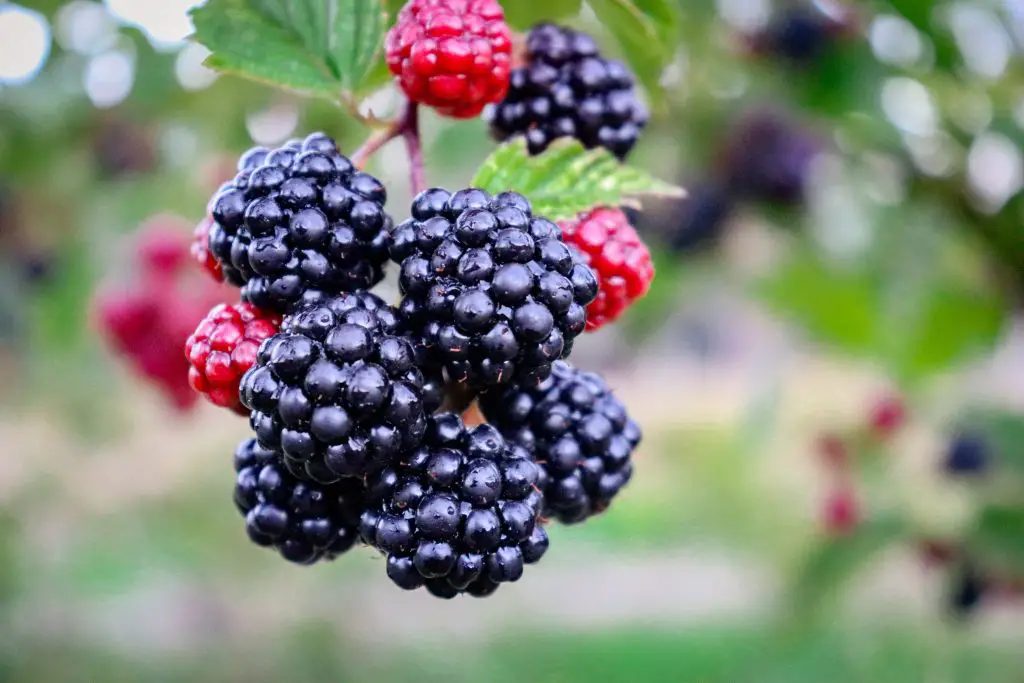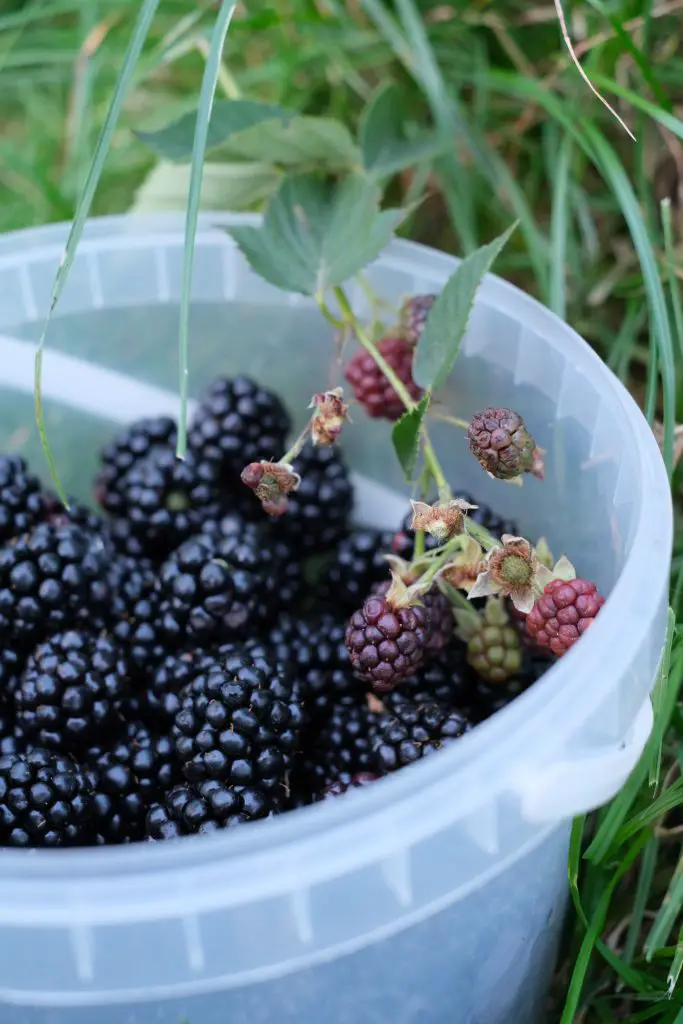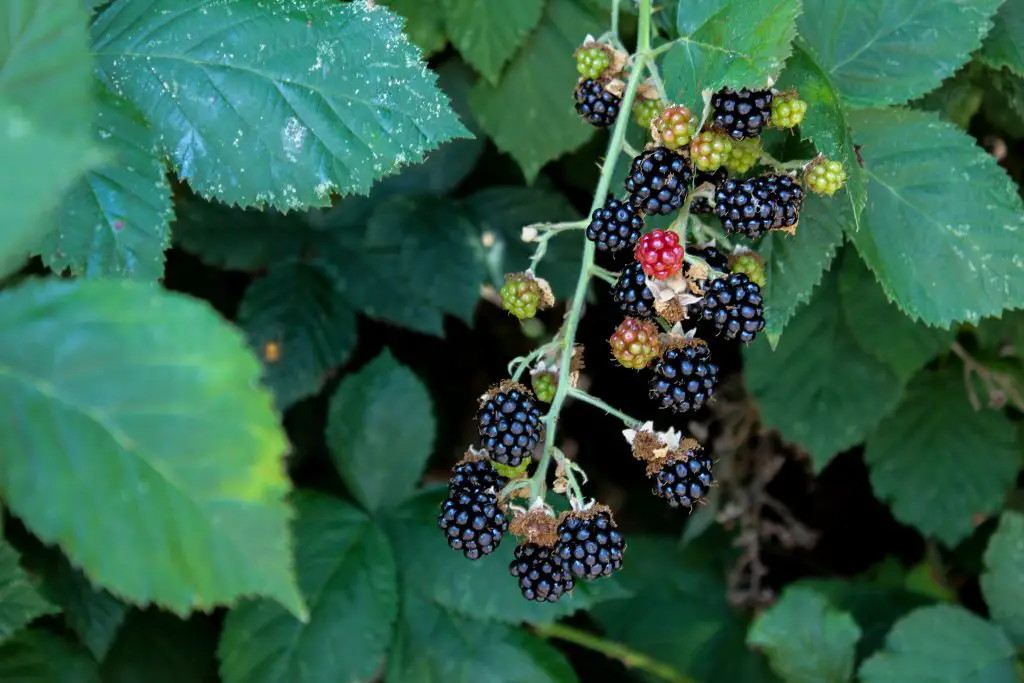Blueberry vs Blackberry: What Are The Differences? Blueberries and blackberries are among the most popular soft fruit throughout the summer. They are widely used in a range of cooked desserts as well as being eaten fresh with ice cream. So what is the difference between these two fruits?
Blueberry and blackberry are distinctly different fruits. Blueberry is a solid rounded fruit that is typically around the size of a pea whereas blackberries are a compound fruit made up of many individual segments. Blackberries are generally sweeter in flavor and are produced on canes whereas blueberries come from a deciduous shrub.
Blackberries are also often confused with raspberries as they look quite similar. The defining difference between these two fruits is that blackberries contain an edible core whereas raspberries do not.

Are Blueberries More Nutritious Than Blackberries?
Generally blackberries are considered more nutritious than blueberries because they have less calories, carbohydrates, and sugar in them, which is somewhat surprising given that blackberries generally taste sweeter and blueberries.
Additionally, blackberries have higher levels of vitamin A, vitamin C, vitamin E, calcium, iron magnesium, potassium, and folate. However, blackberries and blueberries have similar amounts of vitamin K and blueberries have higher levels of vitamin B1, B2 ,and B6 according to Soupersage.com.
The b vitamins play an important role in the body as they help it to convert carbohydrates, fat, and protein into energy for the body in the form of glucose.
Which Is Easies To Grow Blueberries Or Blackberries?
Without a doubt, blackberries are a far easier plant to grow than blueberries. However, in many areas around the world they are considered a weed because they have a running root system that spreads rapidly through a garden if allowed. In the particular area, I live in there is a hotline that you can call when blackberry plants are spotted.
Blueberries on the other hand are relatively difficult to grow in my experience as I do not have soil in my garden which is ideally suited to the conditions they prefer, as a result of this I have killed several plants.
In regions such as mine where the soil is not ideal, it is best to grow blueberries in pots rather than in the ground as it is easier to adjust the soil conditions.

About Blueberries
Blueberries are plants that are native to North America and are widespread throughout the northern United States and Canada and have been eaten by Native Americans for centuries. Today they remain a popular fresh fruit that is also used in a range of dishes.
The plant itself is a deciduous shrub that varies in height from as little as 4 inches to 13 feet tall. The plants are generally categorized into lowbush and highbush varieties which are the ones that are cultivated for commercial purposes.
The plant is hardy and can be grown in extremely cold temperatures with there even being some commercial production done in places like Alaska. The plants typically take a couple of years to get going before they produce a reasonable harvest, unlike blackberries which will produce fruit in the first year.
How To Grow Blueberries
As mentioned previously I personally have not had the greatest experience with growing blueberries because my soil did not suit them. Blueberries require a relatively acidic soil compared to most other plants, they typically prefer a pH between 4 to 6, so if you do not have acidic soil you will need to modify it.
Soil can be acidified by adding sulfur or things like pine needles however this process can take time so it is advisable to prepare the soil ahead of time. It is better to add this to the soil a couple of months in advance of when you plan to put the blueberry in.
If you have alkaline or neutral soils you will find that you may need to continually acidify the soil as the pH will most likely rise over time. The alternative to this is to grow blueberries in pots where it is much easier to control the soil conditions.

In addition, to acidifying the soil it is recommended that compost be added to increase the nutrient level within the soil to help the plant get off to the best possible start. In terms of light levels, blueberries should ideally be planted in a location that gets at least 6 to 8 hours of sunlight a day in order to optimize fruit production.
Once the plant is in position, it is advisable to apply a layer of mulch that is 2 to 4 inches thick before watering the plant in well. The best time to plant is in mid-spring once all risk of frost has passed. The reason for this is that it provides an opportunity for the plant to become established in its first growing season before it has to survive the winter.
On-going Maintenance Of Blueberry Plants
To maximize the output of the plant it is advisable to prune it on an annual basis in winter to ensure that it maintains a vase shape which will allow the maximum amount of light to enter the shrub. It is also important to remove any dead branches and also tip prune the ones you want to keep to encourage the plant to shoot aggressively in spring.
Additionally, it is important to fertilize on an annual basis in early spring and also ensure that the plant is well watered throughout the season as it has relatively shallow roots. This is particularly important in the first season or two when the plant is still becoming established. If you do these things you’ll be able to enjoy blueberries for many years to come.
About Blackberries
Blackberries are native to North America and Europe and have been eaten by the native people in both regions for thousands of years. The earliest evidence of their use comes from a 2500-year-old danish woman that was found preserved in a bog.
The fruit is widely used to make wine, cordial, jellies, and jams among other things. The wild varieties were extremely prickly and contained many thorns. However, in the 1880s the blackberry was hybridized with several different varieties of raspberries to produce a range of berries such as loganberry and tayberry. Additionally, thornless varieties were developed in the early 1920s which make them easier to grow at home. They have since become a popular addition to many home gardens.
There is a range of plant varieties available that are generally classified based upon the growth habit as either trailing semi-trailing or erected varieties. Despite the differences in growth habits all of these varieties generally require some form of support structure to allow them to be harvested easily.

How To Grow Blackberries
Most varieties are suitable for growing in regions where the temperature does not fall below 10°F (-12°C). When starting the plants off it is advisable to erect a support structure and also add additional nutrients to the soil in the form of compost prior to planting.
I have found that the most effective support structure is a trellis system. The cheapest long-lasting materials to use for this reo mesh or concrete reinforcement mesh as it is cheap and lasts a long time. The other support system that works really well is getting panels of temporary fencing because it is extremely easy to erect.
When planting blackberries trailing varieties need to be planted 6 to 8 feet apart while erect and semi-trailing blackberries can be planted a little closer approximately 3 to 4 feet apart. The best time to complete the plantings is in early spring mainly because blackberry plants are generally available as bare rooted.
When selecting varieties it is ideal to choose early, mid, and late-season varieties to extend the period of harvesting. As the plants produce anywhere between 10 and 20 pounds per plant you will typically need 4 to 6 plants to ensure you have enough for your family’s needs.
Once the plants are in the ground next to the support structure, a thick layer of mulch should be applied to them before watering them in well. During the spring plants will develop canes which will need to be tied into the support structure as they get larger to ensure they don’t become a tangled mess.

Once the canes begin to fruit which will be in late spring to autumn depending upon the variety that you’re growing they should be picked when the fruit is plump and completely black. If you pick them too early you will find that they are quite tart as the sugars in the fruit have not fully developed.
Once the fruiting is complete cane should be removed as it will not produce any further fruit. As the plants will continue to produce increasing numbers of canes over time it is advisable to leave 6 or 7 canes per plant.
During the winter period, it is advisable to mulch the canes and apply fertilizer so that the plant is ready to go for the following season.
Conclusion
Blackberries and blueberries are fantastic fruits however if I have to choose which one is better I would have to go with blackberries because sweeter, more nutritious, and easier to grow.
Relevant Articles
How Much Does One Blueberry Bush Produce?
Blueberries Vs Raspberries: What Is The Difference?
What Are The Easiest Berries To Grow?
Can You Plant Seeds From Store Bought Strawberries?
